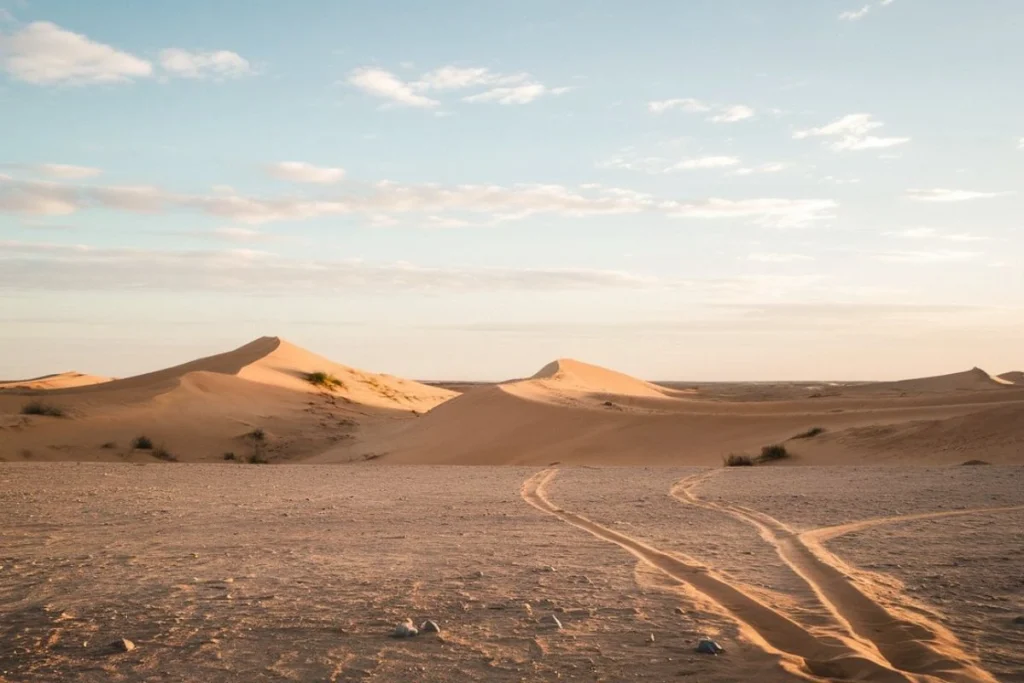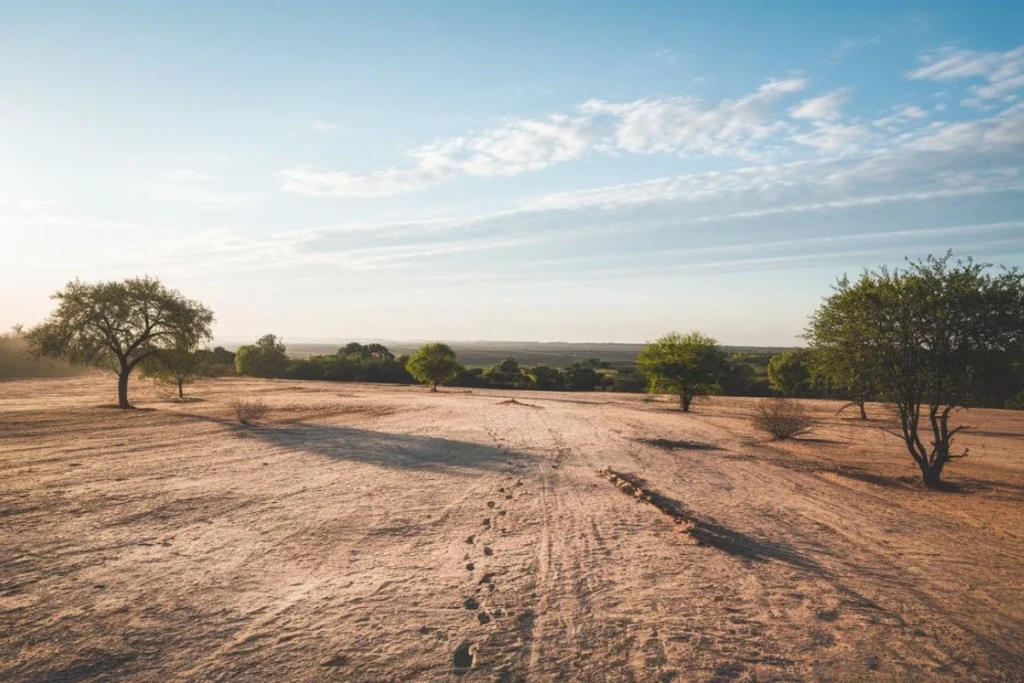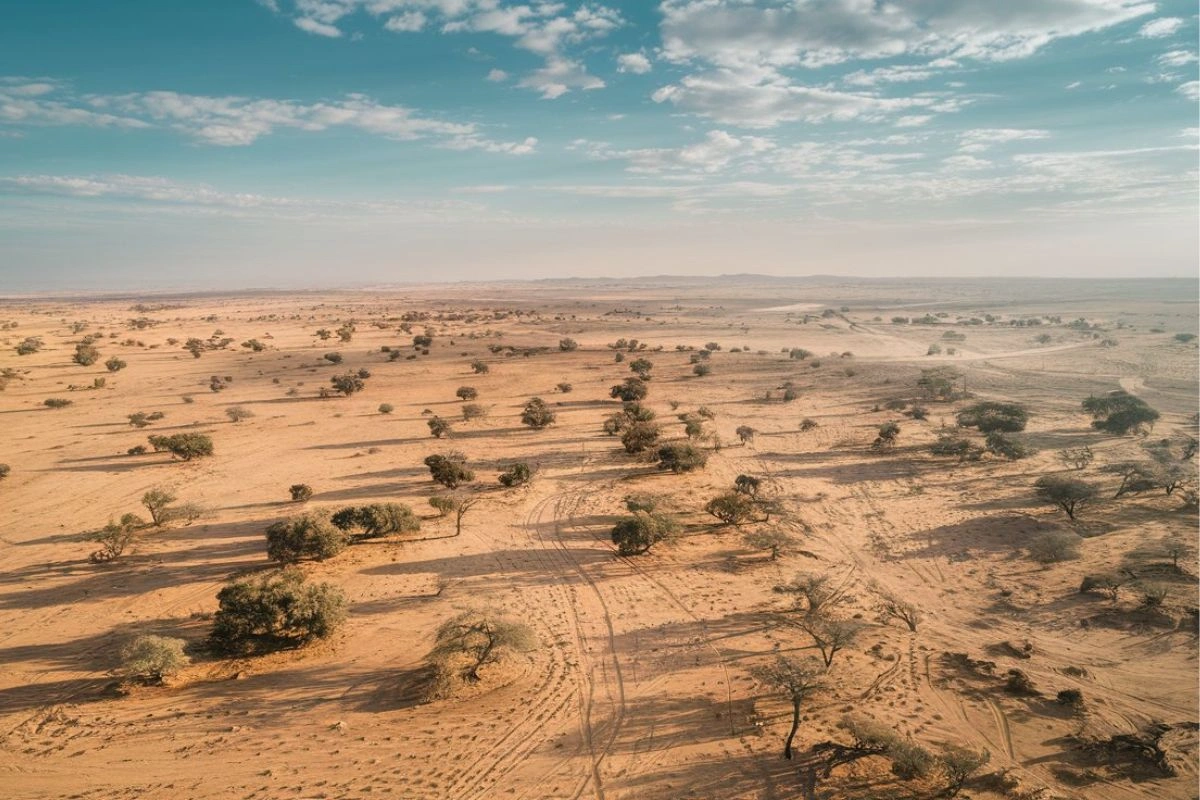Desertification is a growing environmental issue with far-reaching impacts on ecosystems, economies, and human well-being. It describes the process where fertile land in arid, semi-arid, and dry sub-humid areas deteriorates, turning once-productive landscapes into barren deserts. While natural factors such as drought contribute to the problem, desertification is predominantly driven by human activities. Understanding the causes, effects, and solutions is crucial for mitigating this crisis and ensuring the sustainability of our planet.
What is Desertification?
Desertification is the degradation of land in drylands caused by climatic variations and human activities. The term does not imply the expansion of existing deserts but the loss of productive capacity in areas once rich in vegetation and soil fertility. Drylands, which cover over 40% of the Earth’s surface, are especially vulnerable, and desertification threatens nearly 2 billion people who depend on these regions for agriculture and livelihoods.
Desertification occurs when vegetation cover is reduced, soil becomes eroded, and land loses its ability to retain water and nutrients. Over time, this process results in the desert-like transformation of previously arable land.
The Scale of Desertification
Globally, desertification affects approximately 25% of the Earth’s land area and threatens the livelihoods of 1.5 billion people. It disproportionately impacts regions already struggling with poverty, food insecurity, and water scarcity, particularly in Africa, the Middle East, and Asia. However, the effects are not confined to these areas. The economic and ecological consequences reverberate across borders, highlighting the global importance of combating desertification.
Root Causes of Desertification
1. Deforestation
Forests act as natural barriers against soil erosion by stabilizing the ground and maintaining soil fertility. Large-scale deforestation, often driven by agricultural expansion or logging, strips the land of vegetation. This exposes soil to wind and water erosion, which accelerates land degradation. Without trees and plant roots, the land becomes increasingly barren and unable to recover from environmental stressors.
2. Overgrazing
Livestock overgrazing is a significant contributor to desertification. When animals graze beyond the land’s regenerative capacity, the vegetation cover diminishes, leaving the soil exposed. The trampling of soil by livestock compacts it, reducing its ability to absorb water and nutrients. This degradation is especially problematic in semi-arid regions, where vegetation regrowth is slow.
3. Unsustainable Agricultural Practices
Intensive farming methods, such as monocropping, excessive tilling, and over-irrigation, lead to soil nutrient depletion and salinization. These practices leave land unproductive over time. For example, over-irrigation can cause waterlogging and increase soil salinity, making the land unsuitable for crop growth.
4. Urbanization and Industrial Development
The expansion of urban areas and industrial projects often consumes fertile land, sealing it under concrete and asphalt. Infrastructure development disrupts natural water flows, alters local ecosystems, and reduces the availability of productive land.
5. Climate Change
Climate change worsens desertification by disrupting rainfall patterns, raising temperatures, and making droughts more severe. Prolonged dry spells, coupled with rising temperatures, create hostile conditions for vegetation and accelerate soil degradation.
6. Mining and Resource Extraction
Mining operations disrupt ecosystems by removing vegetation and topsoil. Additionally, mining runoff and pollution degrade surrounding land and water resources, compounding desertification risks.
Effects
1. Decline in Agricultural Productivity
Desertification greatly diminishes soil fertility, hindering the ability to grow crops or support livestock. As a result, food production declines, threatening food security in affected regions. This is especially harmful to communities that rely on subsistence farming for their livelihood.
2. Water Scarcity
Degraded land loses its ability to retain water, leading to reduced water availability for agriculture, drinking, and sanitation. Rivers, lakes, and aquifers in desertified areas often dry up, worsening water crises in already vulnerable regions.
3. Loss of Biodiversity
The destruction of habitats caused by desertification leads to a decline in plant and animal species. Desertified areas can no longer support diverse ecosystems, resulting in the extinction of species that rely on these habitats.
4. Economic Consequences
Countries affected by desertification face significant economic losses due to decreased agricultural productivity, higher food imports, and increased costs for land restoration. These economic challenges can exacerbate poverty and inequality.
5. Forced Migration and Social Conflicts
As renders land uninhabitable, communities are often forced to migrate in search of better living conditions. This migration can lead to overcrowded urban areas, strained resources, and conflicts over land and water.
6. Worsening Climate Change
Land affected by loses its capacity to retain carbon, releasing stored carbon dioxide into the atmosphere. This cycle further accelerates global warming, adding to the effects of climate change.

Regions Most Affected by Desertification
1. Sub-Saharan Africa
The most vulnerable area is the Sahel region, located between the Sahara Desert and the Sudanese savanna. Rapid population growth, deforestation, and overgrazing have made the Sahel a hotspot for desertification.
2. Middle East and North Africa
Countries in the Middle East face severe desertification due to water scarcity, over extraction of groundwater, and unsustainable agricultural practices.
3. Asia
Central Asia, including countries like Kazakhstan and Uzbekistan, suffers from salinization caused by over-irrigation. Meanwhile, South Asia faces desertification due to deforestation and industrial activities.
4. Australia
Australia’s arid interior is prone to desertification. Poor land management and prolonged droughts have worsened soil degradation in the region.
Solutions to Combat Desertification
1. Afforestation and Reforestation
Planting trees and restoring forests can stabilize soil, reduce erosion, and enhance water retention. Programs like Africa’s Great Green Wall Initiative, which aims to create a belt of greenery across the Sahel, have shown promise in combating desertification.
2. Sustainable Land Management (SLM)
SLM practices include crop rotation, agroforestry, and soil conservation techniques such as contour plowing and terracing. These methods improve soil fertility and prevent erosion.
3. Water Conservation and Management
Effective irrigation techniques, like drip irrigation, reduce water waste significantly. Rainwater harvesting and the construction of small dams can also ensure a steady water supply for agriculture and ecosystems.
4. Soil Restoration Techniques
Adding organic matter, like compost or biochar, enhances soil structure and fertility. Techniques such as mulching and using cover crops protect soil from erosion.
5. Policy and Governance
Governments must implement policies to regulate land use and promote sustainable practices. International agreements like the United Nations Convention to Combat Desertification (UNCCD) provide a framework for global cooperation.
6. Community Participation
Engaging local communities in conservation efforts ensures that sustainable practices are implemented effectively. Education and awareness campaigns can empower communities to take action against it .
7. Technological Innovation
Modern technologies, such as satellite monitoring and AI-driven land analysis, can identify areas at risk and guide restoration efforts. Innovations like drought-resistant crops and soil-enhancing bioengineering also offer solutions.
Case Studies: Success Stories
1. China’s Loess Plateau Rehabilitation Project
China restored over 6 million hectares of degraded land in the Loess Plateau through afforestation, terracing, and sustainable farming practices. The project transformed the region into a fertile landscape and improved the livelihoods of local communities.
2. Niger’s Farmer-Managed Natural Regeneration (FMNR)
In Niger, farmers have successfully regenerated over 5 million hectares of degraded land by protecting and nurturing naturally regrowing trees. This low-cost solution has improved soil fertility and increased agricultural productivity.
What Can Individuals Do?
While governments and organizations lead large-scale initiatives, individuals can also make a difference by:
- Reducing water waste through efficient usage and conservation methods.
- Supporting sustainable products that prioritize eco-friendly practices.
- Planting native vegetation to protect soil and enhance biodiversity.
- Raising awareness about the impacts of desertification and advocating for solutions.
The Road Ahead: Combating Desertification Together
Desertification is a complex and multifaceted issue, but it is not insurmountable. By combining scientific innovation, sustainable practices, and community involvement, we can reverse land degradation and protect ecosystems. The success stories from regions like China, Niger demonstrate that with determination and collaboration, can be addressed effectively.
By acting now, we can preserve the planet’s vital resources, ensure food security, and create a sustainable future for generations to come.

FAQs
- What is desertification caused by?
caused by deforestation, overgrazing, unsustainable agriculture, and climate change. - Can desertification be reversed?
Yes, by implementing reforestation, sustainable land management, and soil restoration practices, desertification can be reversed. - Which countries are most affected by desertification?
Countries in Sub-Saharan Africa, the Middle East, and Central Asia are among the most affected. - How does desertification affect humans?
It reduces food and water availability, forces migration, and worsens poverty and social conflicts. - What are some solutions to desertification?
Solutions include afforestation, efficient water management, sustainable agriculture, and community participation. - What role does climate change play in desertification?
Climate change intensifies desertification by increasing droughts, reducing rainfall, and altering ecosystems.
Conclusion
Desertification is a critical environmental challenge with wide-ranging consequences for ecosystems, economies, and human livelihoods. As fertile lands deteriorate into arid deserts, the effects ripple through communities, reducing agricultural productivity, exacerbating water scarcity, and threatening biodiversity. Driven by factors such as deforestation, overgrazing, unsustainable farming practices, and climate change, desertification poses a serious threat to global food security and economic stability.
Although the issue is severe, there remains hope. Innovative solutions like afforestation, sustainable land management, and advanced water conservation techniques have proven effective in reversing land degradation. Examples such as China’s restoration of the Loess Plateau, Niger’s farmer-led regeneration efforts, and Israel’s innovative desert farming demonstrate that recovery is possible. These initiatives not only rehabilitate degraded lands but also enhance livelihoods and build resilience against climate change.
Addressing desertification requires collective action at every level—global policies, community participation, and individual commitment. Governments must enforce sustainable land-use regulations, organizations must invest in conservation projects, and individuals can support eco-friendly practices and advocate for change.
By prioritizing solutions and fostering collaboration, we can combat desertification effectively. Restoring degraded lands not only protects vital ecosystems but also ensures food security, water availability, and a stable future for billions of people. Together, we can turn the tide on desertification and build a sustainable legacy for future generations.

